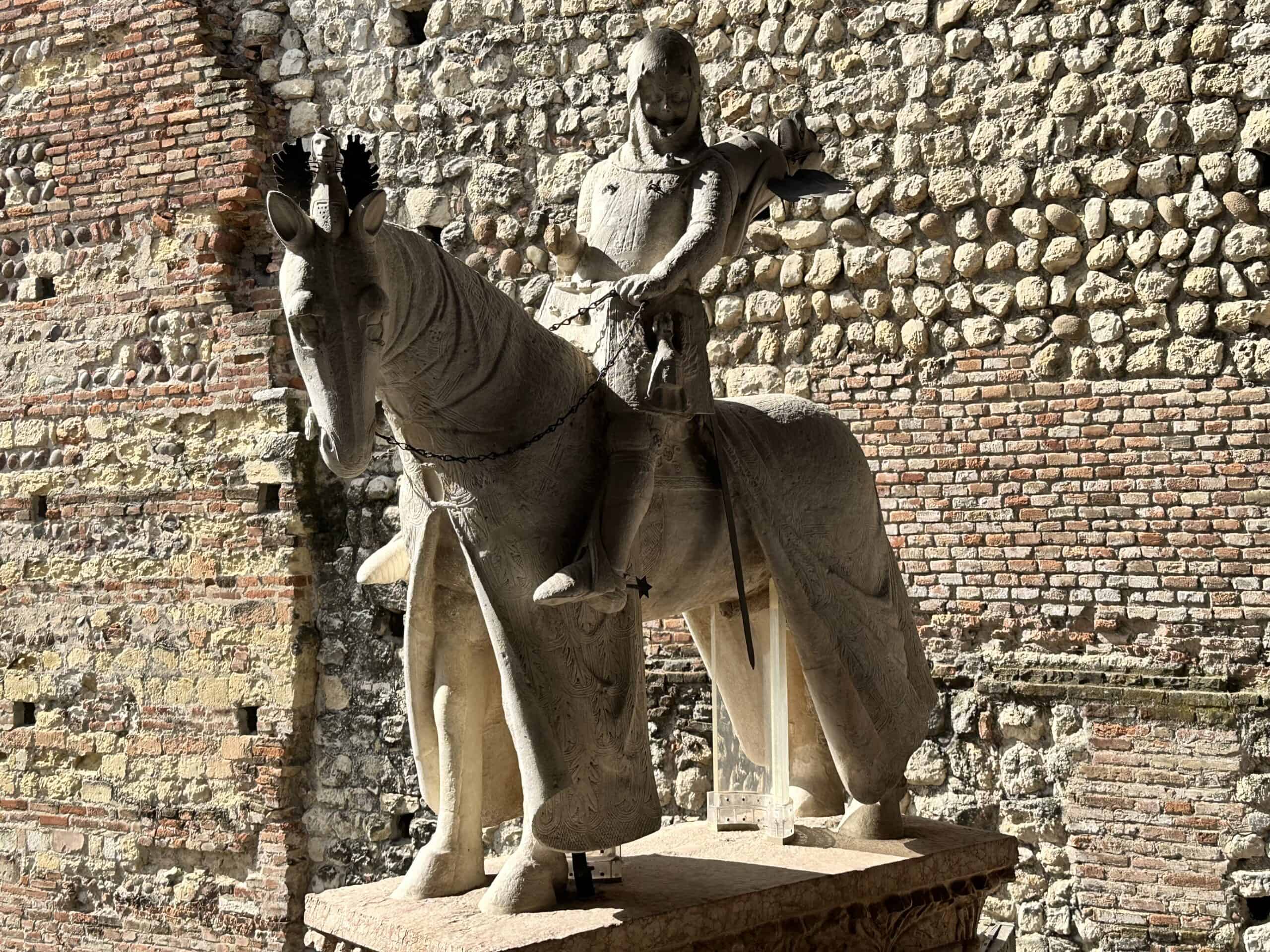
Castelvecchio is the largest military monument of the Scaligeri and is one of the symbols of Verona.
The Scaligero Bridge is part of the fortress of Castelvecchio and crosses the Adige River. Built between 1354 and 1356, it served to ensure an escape route from the Castelvecchio complex to Tyrol in the event of riots in the city. On April 24, 1945, the retreating German troops blew up the Castelvecchio Bridge. It was totally rebuilt between 1945 and 1951 also thanks to many original stones found in the bed of the Adige River.
Castelvecchio houses the most important museum in Verona.
The Castelvecchio Museum exhibits important collections of medieval and Renaissance art, jewels, armor and an art gallery
Among the most important works in the Museum are the original statue of the Ark by Cangrande della Scala, the sword by Cangrande, the painting of the Madonna della Quaglia by Pisanello and the painting of the Child with a drawing by Caroto.
The Madonna della Quaglia is the most important and representative work of Castelvecchio. It is a fundamental painting in the history of art.
The painting of the Child with a drawing by Giovan Francesco Caroto is one of the emblematic paintings of the Castelvecchio Museum.
On November 19, 2015, a gang of criminals broke into the Castelvecchio Museum at the time of evening closing.
After immobilizing the ticket office staff, the thieves set off for the rooms of the museum, detaching numerous works from the walls. In total, 17 paintings were stolen, including symbolic works such as The Madonna of the Quail and the Portrait of a Young Man with Drawing.
After months of investigation, the paintings were found in Ukraine. The members of the gang were arrested with the guard of the Castelvecchio Museum who had acted as a basista.
After some hesitation by the Ukrainian authorities for the restitution and a careful restoration, in December 2016 the works finally returned to the Castelvecchio Museum. The real reasons for the theft have never been known.






















